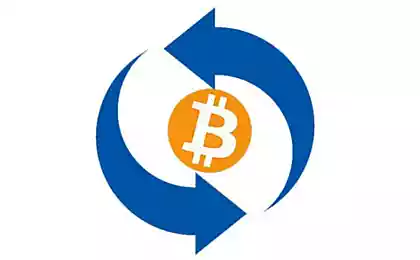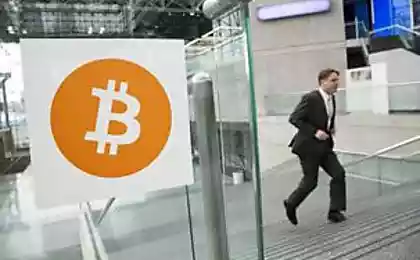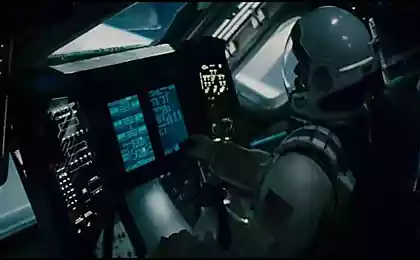2187
Overview of decentralized technologies. Part 2
The first part can be found here , in it I talked about the fact that such Blockchain, Ethereum, Ripple and Storj.io. Today we will talk about the interesting, new and not yet covered in the proper degree Habré Giktaymse technology, it Sidechains and smart contracts.
Sidechains h4> Cryptography, inventor and author of the concept sidechain Adam Beck and a group of associates, which include developers, who has spearheaded the promotion of Bitcoin, and well-known figures in the industry of online payments startup launched Blockstream . On the role of the leader was invited by the former CEO Zero-Knowledge Systems Austin Hill. According to the official website, Blockstream aims to accelerate the development and innovation in Cryptocurrency, public assets and smart contracts and sidechain - his first development, presented at this time in the form of technical document .
Successful implementation of these sidechain opens interesting perspectives:
Bitcoin could become a major reserve Chein for many other distributed platforms and the main reserve currency for other Cryptocurrency. This change will accelerate the spread and development of third-party platforms such as Ethereum, Maidsafe, Ripple, Zerocoin and others, making it possible to directly connect them with the basic functionality Bitcoin.
In the case of the successful application of sidechain, this technology will be the next step in evolution as Cryptocurrency and decentralized distributed networks of information exchange in general. Side of the platform will become more accessible to the vast number of users Bitcoin and acquire a solid feedback from across its network.
Successful adaptation sidechain also allowed to combine Bitcoin and many other alternative Cryptocurrency and distributed platforms in a single ecosystem, each participant is able to use all its diversity kriptoproduktov and choose the ones that will meet their needs exactly.
Next, I would like to give the main ideas of the article « A simple explanation of bitcoin sidechains », which explains the basic principles of technology:
Description sidechain now represented as research , mentioned above.

The paper describes methods for constructing "tied sidechain" (pegged sidechains). Sidechain in themselves are not something new: how to create them, and the idea of creating them are discussed for some time, and key breakthrough this field outlined earlier this year. This work, however, reveals a more detailed sense of the term, and has already attracted a lot of comments.
And yet what a sidechain? And why should you even pay attention to them?
How we imagine Bitcoin h5> The key to understanding the most innovative changes that occur with Bitcoin - make sure that you will get a correct mental model of how it works. In fact, it turns out, a lot of people do not understand how it works and, as a result, have a misconception about it.
To help deal with this, a few months ago author invented for Bitcoin analogy , based on a comparison of its & quot; unspent conclusions "(see. transaction output - approx. interpreter) with areas of land. Here are its foundations:
To begin, throw away all that is connected with money or currency payments. Throw and also the phrase "register transactions." Bitcoin startling secret is that there is no register, no! There are only two structures that have value - transactions and units thereof. It is important to understand this as follows in order to make sense for you sidechain became clear.
When you "move" Bitcoins, you say:
- Hello everyone ... I would like to move here these specific Bitcoins, please.
- Here is my proof that I have the right to move them.
- And here is thus recipient, in turn, be able to prove that he has the right to move them.
Three key stages Bitcoin-transaction i>
There are several important points:
- Bitcoins can not be the ideal dimension ... when you move (ie spend) them, you spend a certain amount of specific, unique Bitcoins.
Thus, the "fundamentals of science» Bitcoin-transactions are clear: "This is a coin that I want to move. Here is the proof of my right to have to do it, and that's what the recipient must do if he wants to spend it ».
This transaction falls into circulation within the overall network, somehow finds its way into the unit and, after it will be built on top of other blocks, each participant network can be completely confident that these changes are irreversible. Everything continues to take its course. Like all good, what more could you ask for?
Basic fundamentals Bitcoin generally works just fine ...
And what's more, you happen to can do with it really interesting things. For example, you can use the "non-ideality of the measurement" Bitcoins to "tag" them. In this work is based ideas such as & quot; Colored Coins & quot; and & quot; Smart Property & quot ;.
However, there are problems such as:
Intervals forming units
Bitcoin-forming interval unit is 10 minutes, so that the new transaction has found its way to the block, it takes an average of five to ten minutes, no matter how great you are willing to pay a commission. For some people it is too slow - so much so that they are experimenting with alternative based on the code Bitcoin Cryptocurrency that use a smaller interval.
The structure of the transaction
"Three-step" structure of the transaction is very common, but it allows you to transfer only the right of possession of Bitcoins. Some people would like to pass on such systems more diverse forms of information. As an example, decentralized exchange, which the participants need a way of placing orders. As a result, projects such as Mastercoin, Counterparty, NXT and others or create their own levels of interaction over Bitcoin, or use a completely different source code base to achieve their goals.
Terms of the transaction
Above I wrote that you can embed in Bitcoin-transaction complicated rules for specifying how will be checked right of possession. Be that as it may, the language of constructing scenarios Bitcoin intentionally limited, and implementation of many ideas in the field of Smart Contracts is difficult or impossible. Therefore, projects such as Ethereum build an entirely new infrastructure to develop these ideas.
The same security policy for all
Regardless of whether you move $ 1 billion, or one hundredth of a cent on the network Bitcoin, in both cases you will get the same security guarantees. In this case, you lose time and pay commission. And if you are willing to sacrifice safety for speed? In such a case today for you, there is only one real option - to send a centralized provider of coin purses which you will have to trust their integrity and safety. And then, using their accounting system, you can perform any desired transaction with their other clients, does not come into contact with this transaction with register Bitcoin. However, so you lose all the advantages of a decentralized network of valuable assets.
"equal for all" does not mean "Convenient for all" h5> The use of experimental or rapid changes in technology Bitcoin - a very risky business, so changing it is slow. Thus, if such a constant, "the same for all" architecture is not suitable for a particular practical case, you have a problem. You need to either use a completely different Cryptocurrency (can even create your own!) Or use (or create) a centralized service, and this leads to new risks.
This situation is very uncomfortable. It also creates risks fragmenting and slows the process of adding a Bitcoin-network products, services and infrastructure.
However, we can make an interesting observation. Imagine what happens when you send Bitcoins in centralized wallet, such as for example circle.com on safe storage.
You send your coin to a particular Bitcoin-address They appear inside your purse to circle, but now you can not control them using technology blockchain. In some point in the future, you can send your coin back from the circle-wallet to your Bitcoin-address Now you have control over again by some of the specific coin blokcheyna
The essence of the sidechain h5> The key idea of the concept sidechain is as follows:
What if you could send Bitcoins are not only individuals, to individual addresses or centralized services, but also in other blokcheyny?
Imagine that there is a similar to the Bitcoin system you want to use. Perhaps it Litecoin or Ethereum or something completely new. Perhaps it forms blocks faster and has more rich scripting language. As if there were not, the idea is that you would like to take advantage of it, but prefer not to risk it and do not spend the effort to purchase title characters of this platform. You do have Bitcoins, why you can not just use them?
Sidechain offer this idea:
Post your Bitcoins on a specially crafted Bitcoin-address, which is conceived in such a way that after this operation, their use becomes unavailable for both you and for anyone else. Now they are completely frozen, and can only be unlocked if someone can prove that they are no longer used anywhere else (more on this later). In other words, you use the basic rules of Bitcoin-transactions that explained above, in order to impose upon them the condition of their future owners. Whoever he was, he would have to fulfill this condition is to get the right to dispose of them. Once the freezing transaction receives the appropriate confirmation, you send a message to another blokcheynu - the one that you want to use. This message includes a confirmation that the coin has been sent to a special address Bitcoin-network, and thus, were frozen. But the most important part of this message is the information about who did this item. If the second blokcheyn agreed to be Bitcoin-sidechain, he does something very special - creates exactly the same number of title characters of the network and sends them to you in control. That is, it looks as if you transferred your Bitcoins to another blokcheyn. And remember, they are frozen in the network Bitcoin, so we did not create anything, and nothing is destroyed ... Just "move" them. Now with the help of a coin, you can perform a transaction in another Cheney, whatever rules he did not use. Assume this sidechain units are faster. Suppose his scripts transactions are Turing-complete. Let's say you need to pay a commission to stimulate the activities of owners sidechain. Specific rules will be out what they want to see its owner. The only rule that matters: if you can prove that you did not view a number of Bitcoin network Bitcoin, the same number appears in a new saydchene who agreed to follow this agreement. And now the second part of this clever ideas. The above logic is fully symmetrical. So whoever was holding at these Coyne in sidechain at some point in time, he can send them back to Bitcoin-network, creating a sidechain special transaction that numbs coin in it. They disappear from the sidechain and will be available again in the Bitcoin-network is under the control of who previously owned them in the sidechain. 
sidechain use standard three-stage Bitcoin-tranzatsiyu freezing Bitcoins until they "are" in sidechain i>
So, once again: we use the standard functional Bitcoin-transactions to make the coin available. Next, we prove the second, unrelated directly to Cheney that we did it. Once this is done, their current owner in the sidechain may, producing a similar action, send them back to Bitcoin-network.
Thus, developers can experiment with different types kriptovalyutnyh rules without the need to create its own currency.
And now there is an opportunity to do some very interesting things in Bitcoin. B>
Briefly abstracted from the details and think about what we have described. We now have a way to move to another platform Bitcoins (sidechain) and return them back again. This is precisely what we do when we move them to a provider online purses or exchange. The difference is that the "platform" on which they were removed as a blokcheynom ... and thus gets the opportunity to have security, transparency, typical for decentralized systems and the opportunity to win other innovations in this area.
Imagine, for example, the sidechain that "Mein" only one company. It would be the equivalent of a purse, but with full transparency of transactions.
We can go further and imagine sidechain which Mein hundreds of different companies that are united under one common organization. Call this full decentralization can not, however affect, impair or interfere with their activities outside will be more difficult.
There are many other possibilities. The most important thing here is that you can create products and services, to experiment without having to create a new currency or a return to the old, centralized nature of the relationship.
Sidechain - an architecture for constructing a semi-centralized products and services for Bitcoin, create that first it was simply impossible.
Now the concept of sidechain has serious problems. Peter Todd усомнился safe sidechain, and believes that the use sidechain may incur a one-time change in Bitcoin-network.
There were also a number of other comments and criticism to which the founders Blockstream promptly ответили, Further comments on the translation of these comments:
What can (and can not) be achieved through bilateral tied sidechain? B>
Sidechain is a generic term and refers to any Cheney, who "performs data validation from other blokcheynov." In this sense, most blokcheynov having sufficiently expressive scripting systems can be easily represented as a sidechain.
In general, a two-way binding mechanism allows you to: take Bitcoins (or other assets), move them to another blokchein and use them in any context in which it allows, and, ultimately, return them to their original blokcheyn.
While using other blokcheyna, you will be limited only by its rules and limits. At the moment, the main method of using sidechain - experimentation with new systems, scripting, and the format of transactions.
RFID tags and beacons do not allow to forget or lose things. Selection of Medgadgets
If you decide tiled sidewalk, you should know that the result of this work will largely depend on the quality of your chosen tiles
























